Mushroom enthusiasts and foragers are often captivated by the diverse and mysterious world of fungi. Among…
Wild Pink Oyster Mushrooms Identification Guide | Pleurotus Djamor
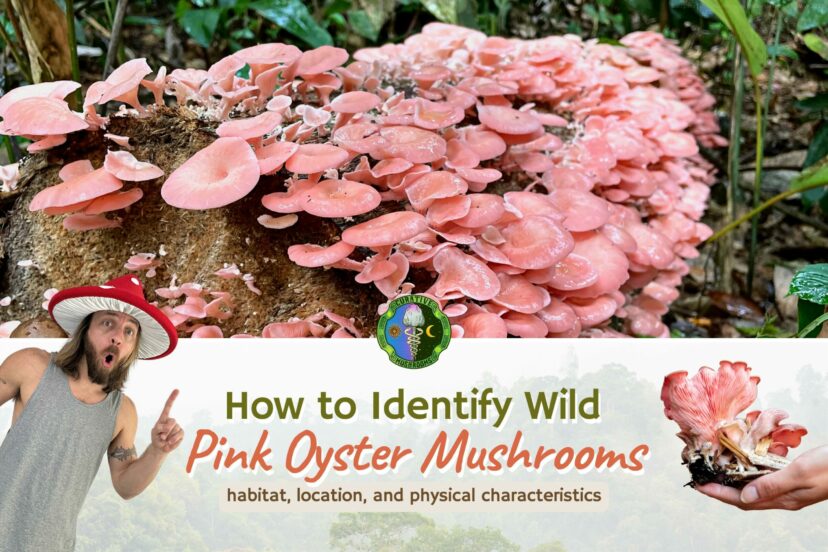
Wild Pink Oyster Mushroom (Pleurotus djamor) Identification. The Pink Oyster mushroom is a particularly fascinating species, with its striking pink color and distinctive shape.
When foraging in tropical or subtropical regions, you might pass by an unassuming mushroom without realizing it could be a wild Pink Oyster mushroom. But upon closer inspection, you’ll see the telltale signs of this unique variety, from its velvety texture to its signature hue.
How to Identify Pink Oyster Mushrooms (Pleurotus Djamor) in the Wild?
In this blog, we’ll walk you through the key characteristics to look for when identifying the wild Pink Oyster mushroom. Including its habitat and unique features.
1. Where Can You Find Wild Pink Oyster Mushrooms?
Wild Pink Oyster mushrooms grow in tropical and subtropical regions in the wild.
They grow on dead or dying hardwood trees like palm trees, rubber trees, and bamboo. Pink Oysters can also grow on wood-based agricultural waste such as sugar cane bagasse.
They are native to Southeast Asia. But also have sightings in other parts of the world, including Africa, Australia, the Caribbean, Central America, and South America.
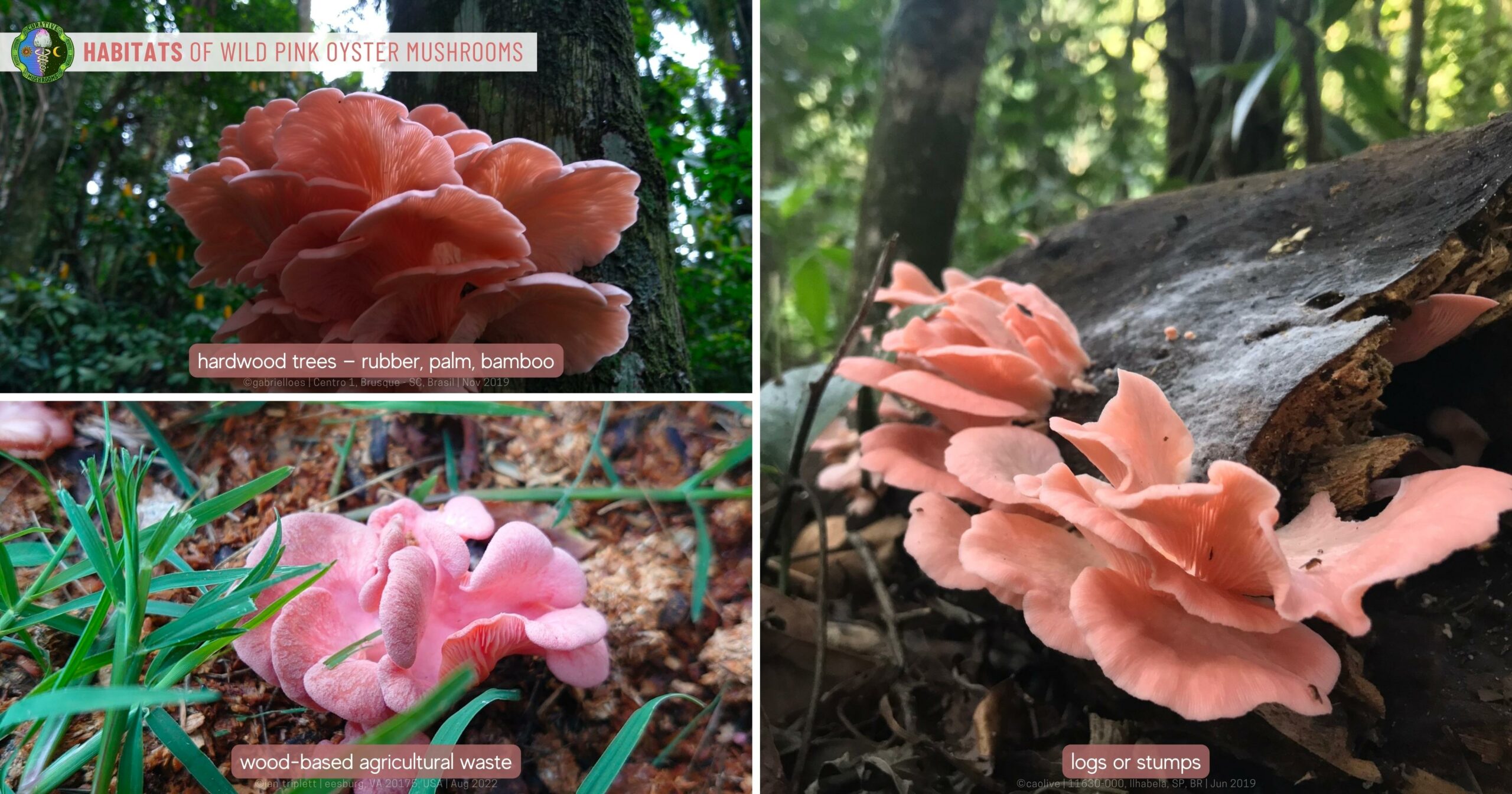
When foraging for Pink Oyster mushrooms in the wild, it’s important to be able to identify the trees and habitat where they are most likely to grow. Look for dead or dying hardwood trees with high moisture content and signs of decay, such as soft bark, cracks, or hollows.
They are often found growing in clusters, either on the trunk or branches of the tree, and can also grow on logs, stumps, and other dead wood.
2. Physical Characteristics of Pink Oyster Mushrooms
Let’s have an overview of the physical characteristics of Pink Oyster mushrooms (Pleurotus djamor), including their caps, stipe, underside, and spores.
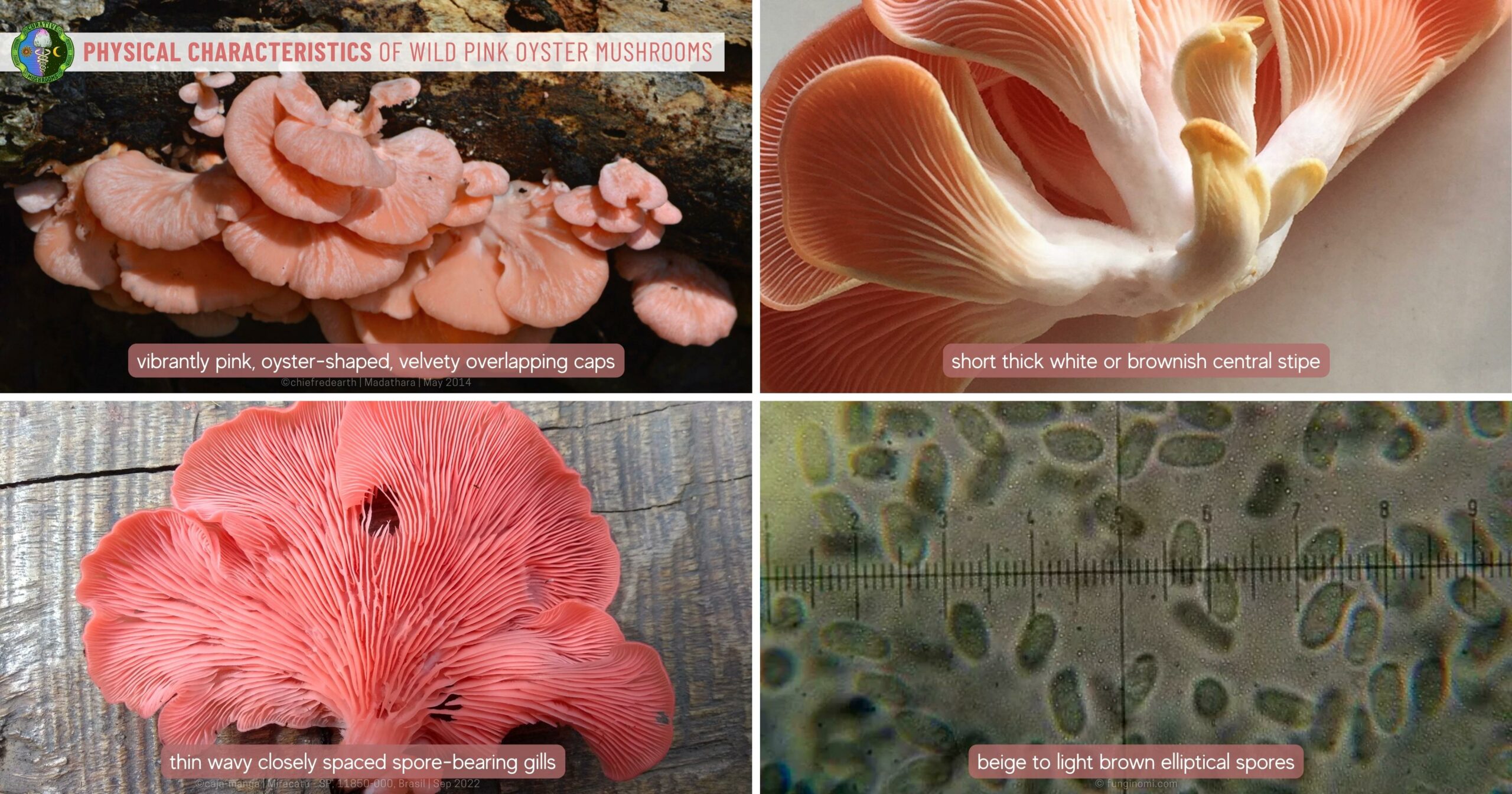
Caps
In terms of appearance, Pink Oysters have vibrantly pink, fan/oyster-shaped, velvety caps that are arranged in overlapping layers. Each cap typically ranges from 2 to 15 cm in diameter.
In the wild, Pink Oyster mushrooms tend to have paler pink caps. Sometimes, they even appear more beige than pink.
Stipe
Each cap attaches itself to a short thick central stem or a stipe. The coloration of the stipe can vary depending on the maturity of the mushroom. In younger mushrooms, the stipe is usually white. While in older mushrooms, it can become more beige or brownish.
However, the color of both the stipe and the caps can also depend on the growing conditions. Such as light exposure and substrate composition.
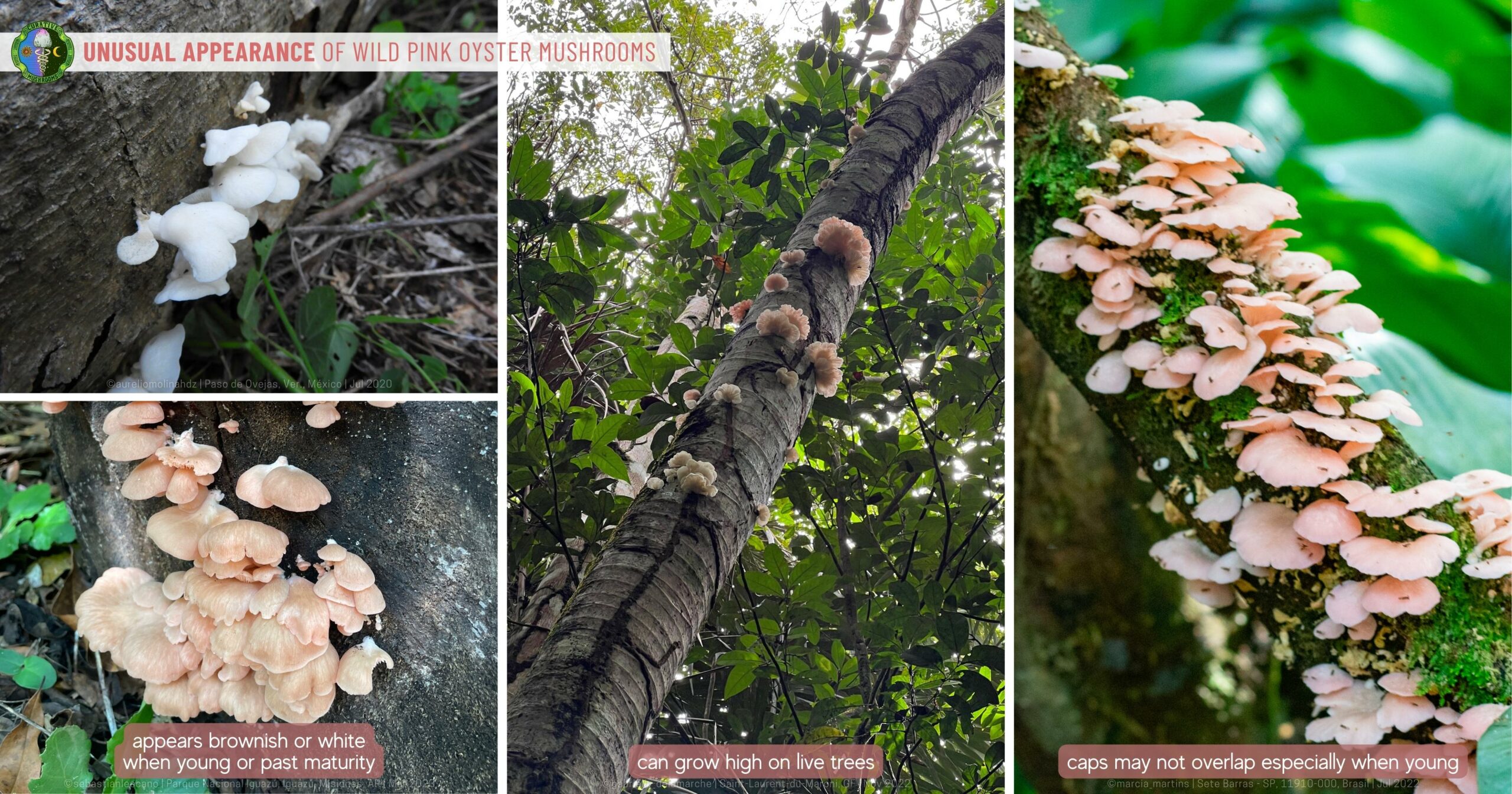
Gills
When examining wild Pink Oyster mushrooms, you will see the most intense pink color at the flat cap folds that meet the underside.
This underside is closely spaced, with white to pale pink gills or lamellae extending from the central stipe to the edge of the cap. These gills are typically thin and wavy in shape and serve as the spore-bearing surface of the mushroom.
Spores
Pink Oyster mushroom spores are small and elliptical, with smooth surfaces that range in color from beige to light brown. Under a microscope, they typically appear elongated with a length of 6-9 micrometers and a width of 1.5-3 micrometers.
These dimensions can vary depending on the maturity of the mushroom, and the spores are a key characteristic used in identifying this species.
Key Takeaways on Wild Pink Oyster Mushroom Identification
Wild Pink Oyster mushrooms grow in tropical and subtropical regions on dead or dying hardwood trees, logs, stumps, and wood-based agricultural waste Moreover, these mushrooms have unique features that make them fascinating to identify in the wild, such as their:
- oyster-shaped vibrantly pink overlapping caps attached to a short thick central stem,
- closely spaced white to pale pink gills,
- and white to pale pink spores.
In conclusion, it is important to be familiar with the habitat and physical characteristics of the wild Pink Oyster mushroom (Pleurotus djamor) when foraging for these mushrooms.
This way, you can safely and successfully identify and enjoy this delicious mushroom. By following these guidelines, you can confidently explore the world of wild mushrooms and discover the wonders of nature.
Top FAQs about Pink Oyster Mushrooms
1. What Are Pink Oyster Mushrooms?
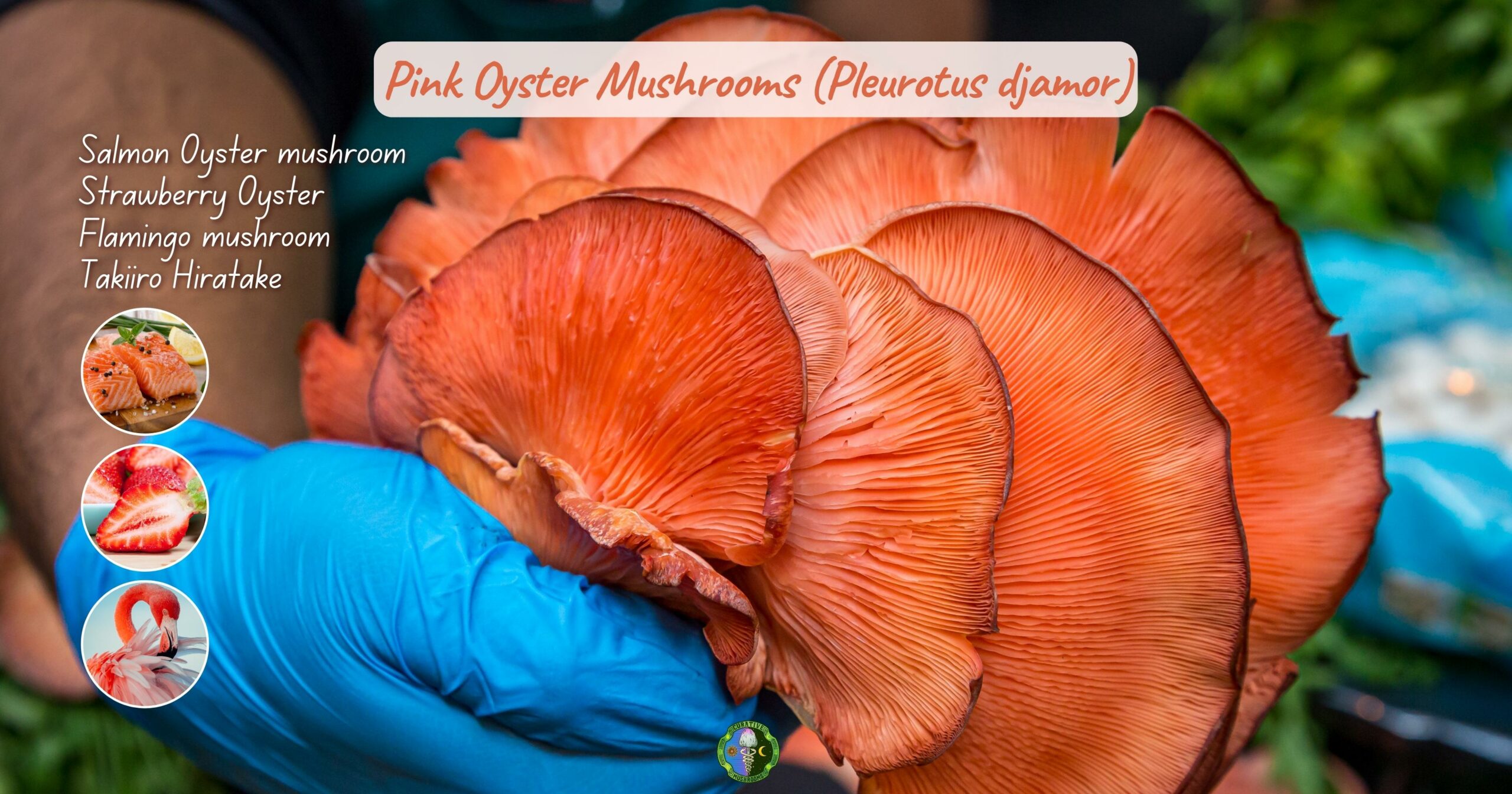
Also known as the Salmon Oyster mushroom, Strawberry Oyster, Flamingo mushroom, or Takiiro Hiratake, the Pink Oyster mushroom is notable for its vibrant pink-to-salmon color.
2. What Classification Is a Pink Oyster Mushroom?
The Pink Oyster mushroom (Pleurotus djamor) is a species of mushroom belonging to the family Pleurotaceae in the order Agaricales. Pink Oysters have oyster-shaped caps that resemble shelf-like formations. These caps attach to a short and thick central stem. They are typically in overlapping layers. And have white to pale pink spore-bearing gills on the underside of the cap.
3. When Was the Pink Oyster(Pleurotus djamor) Mushroom Discovered?
In 1821, the German botanist Georg Eberhard Rumphius named this mushroom Agaricus djamor. A name that was later approved by Elias Magnus Fries. Over time, it had been referred to by various other names. Until Karel Bernard Boedijn transferred it to the Pleurotus genus in 1959. Pleurotus djamor is a tropical & subtropical species of the Oyster mushroom group native to South East Asia and Central America. If you are in a tropical forest, you can typically find Pink Oyster mushrooms growing on dead or dying trees. Particularly those of deciduous trees.
4. What Is Different about Pink Oyster Mushrooms?
Pink Oyster mushroom is distinct with its vibrant pink to light brown cap coloration. Which is quite distinct from other Pleurotus mushroom species. Pleurotus djamor mushrooms are also popular for their fast growth rate and ability to grow in a variety of growing conditions. Making them a popular choice for home cultivation.
5. What Makes Pink Oyster Mushrooms Pink?
P. djamor mushroom’s unique color comes from a blend of eumelanin (red-yellow) and phaeomelanin (brown-black) pigments. Which are two distinct types of melanin (1). Although these pigments are not yet fully understood, a recent study reveals that chromoprotein, a melanosomal protein found in P. djamor, may play a vital role in the creation of melanin (2). Each type of Oyster mushroom contains a unique combination of these two pigments. It determines what color is oyster mushroom, whether it’s pink, Black/Pearl Oyster (Pleurotus ostreatus), or Golden Oyster (Pleurotus citrinopileatus). Therefore, the Pink Oyster mushroom’s color comes from specific proportions of these pigments.
6. Can You Eat Pink Oyster Mushrooms?
Yes, many species of Oyster mushrooms (Pleurotus spp.) are edible and have culinary applications. However, it is important to note that not all mushrooms with pink caps are edible. And some can be toxic or even deadly. Therefore, it is essential to correctly identify any mushroom before consuming it. If you want to try Pink Oyster mushrooms, we recommend that you purchase them from a reputable supplier. Or cultivate them yourself. When cooking, ensure that you properly clean and cook them to avoid any potential health risks.
7. Are Pink Oyster Mushrooms Edible?
Oyster mushrooms are generally safe to eat raw. But we recommend that you cook them before consumption. When eaten raw, they have a crunchy texture and a mild, slightly sweet taste. Some people may find them slightly bitter, but this can vary depending on the individual and the specific mushroom.
8. What Do Pink Oyster Mushrooms Taste Like When Cooked?
Pink Oysters taste slightly sweet and nutty with a delicate and mild flavor. They are tender, and velvety that become slightly chewy in texture after cooking. You can enhance this mushroom’s flavor by cooking it with garlic, butter, or olive oil.
9. Can Pink Oyster Mushrooms Get You High?
No, P. djamor does NOT contain any psychoactive compounds that can get you high. It is safe to eat and does not cause any mind-altering effects. While Pink Oysters may not get you high in the traditional sense, some people report feeling a sense of culinary delight. Thanks to the umami-rich flavor and meaty texture of these tasty mushrooms. Especially when you prepare them with the right seasonings and cooking techniques. It’s worth noting that some mushroom species, such as those containing psilocybin, can have potent hallucinogenic and psychoactive effects. As such, it’s crucial to properly identify any mushroom before consuming it and to exercise caution when consuming wild mushrooms.
10. What Is the Price of This Pink Mushroom?
On average, Pink Oyster mushroom’s price ranges from about $5 to $15 a pound. However, prices may be higher or lower depending on the market demand and supply. For instance, during peak seasons when these mushrooms are abundant, their prices tend to be lower than during off-peak seasons when the supply is limited. In addition to seasonal variations, location, and transportation costs can also affect the price. If you live in a region where this mushroom is not in cultivation, you may have to pay more for them than someone who lives in a region where they are locally available. Similarly, if the mushrooms need long-distance transportation, the additional costs can reflect in their price. Some specialty grocery stores and farmers’ markets may charge higher prices for fresh mushrooms due to their gourmet status. However, you may be able to find more affordable prices by purchasing them directly from a local farmer. Or by growing your own at home.
11. Can You Grow Pink Oysters?
Unfortunately, Pleurotus djamor does NOT grow naturally or in the wild in colder climates. Such as in most regions of North America and Europe. This mushroom requires higher temperature (20 – 30°C) and relative humidity (80 – 95%), and fresh air to fruit. But luckily these days, you can cultivate this mushroom commercially or indoors using a grow kit under specific conditions. Thus, making them widely available in many parts of the world. These mushrooms are a favorite by customers as a substitute for soybean or egg (2).
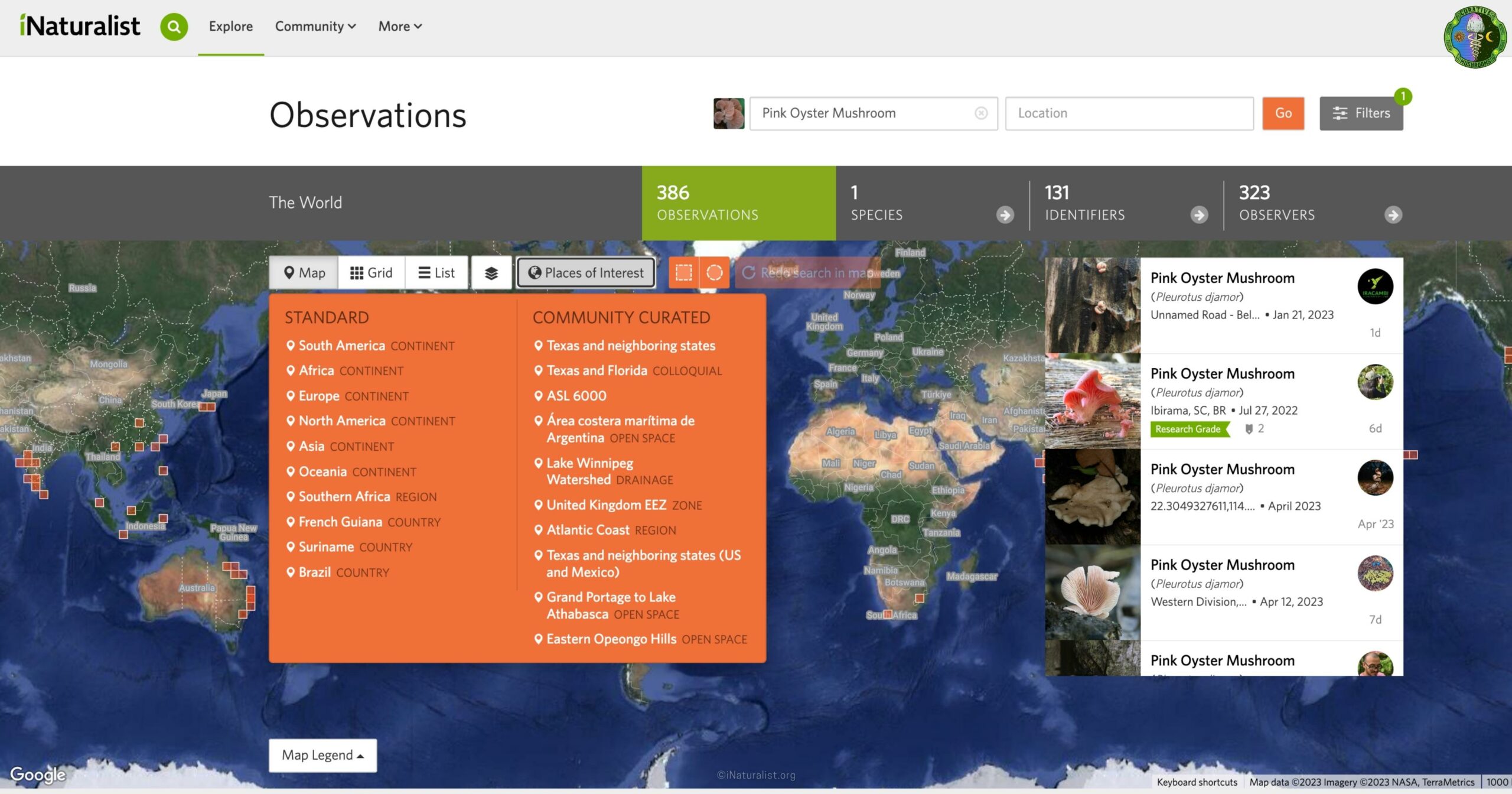
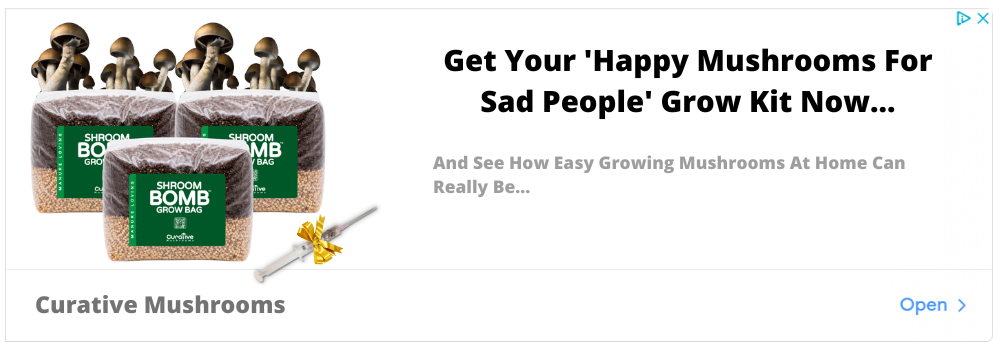
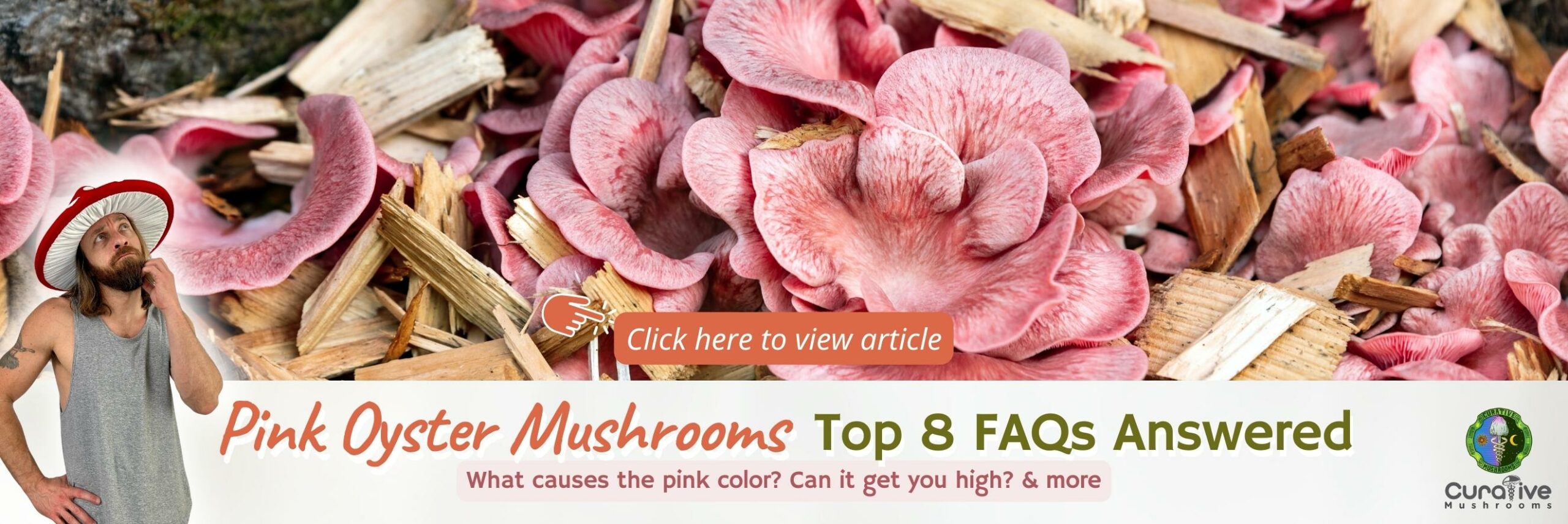
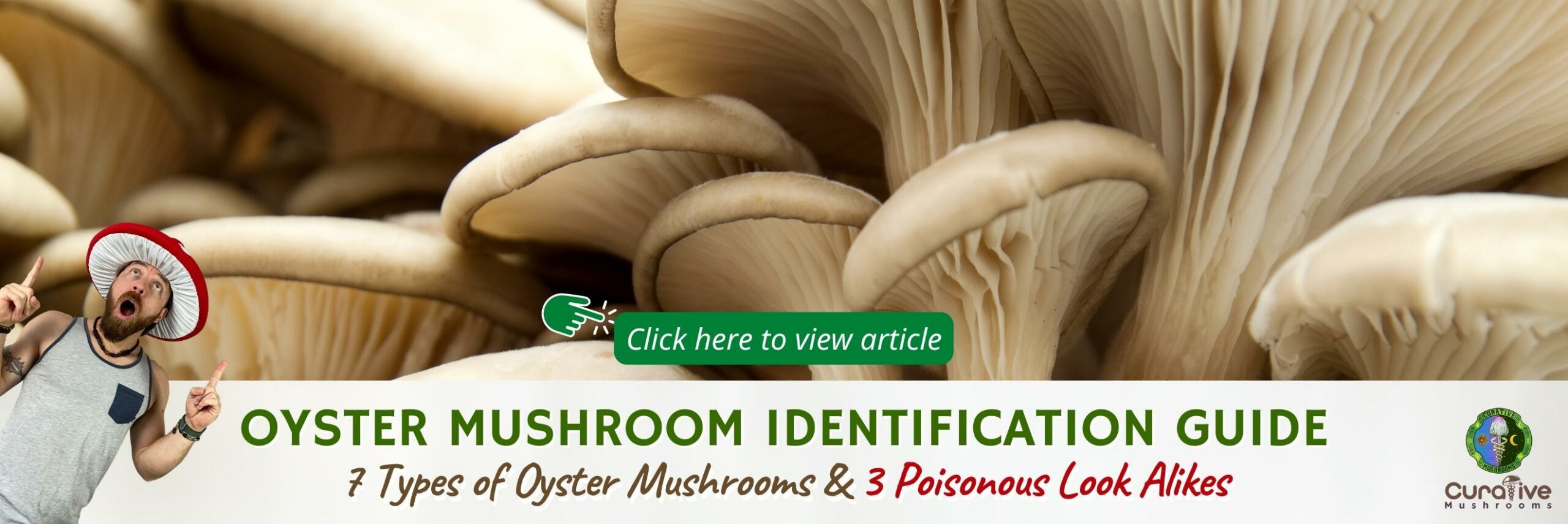

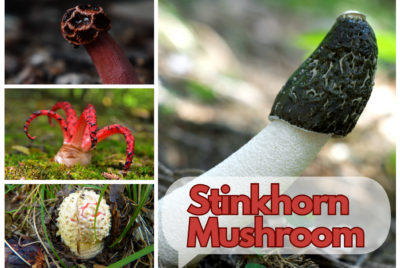
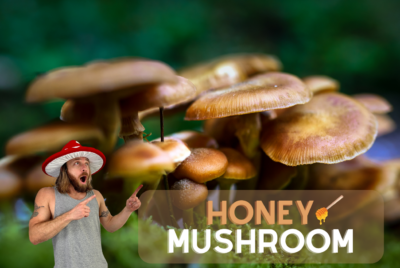
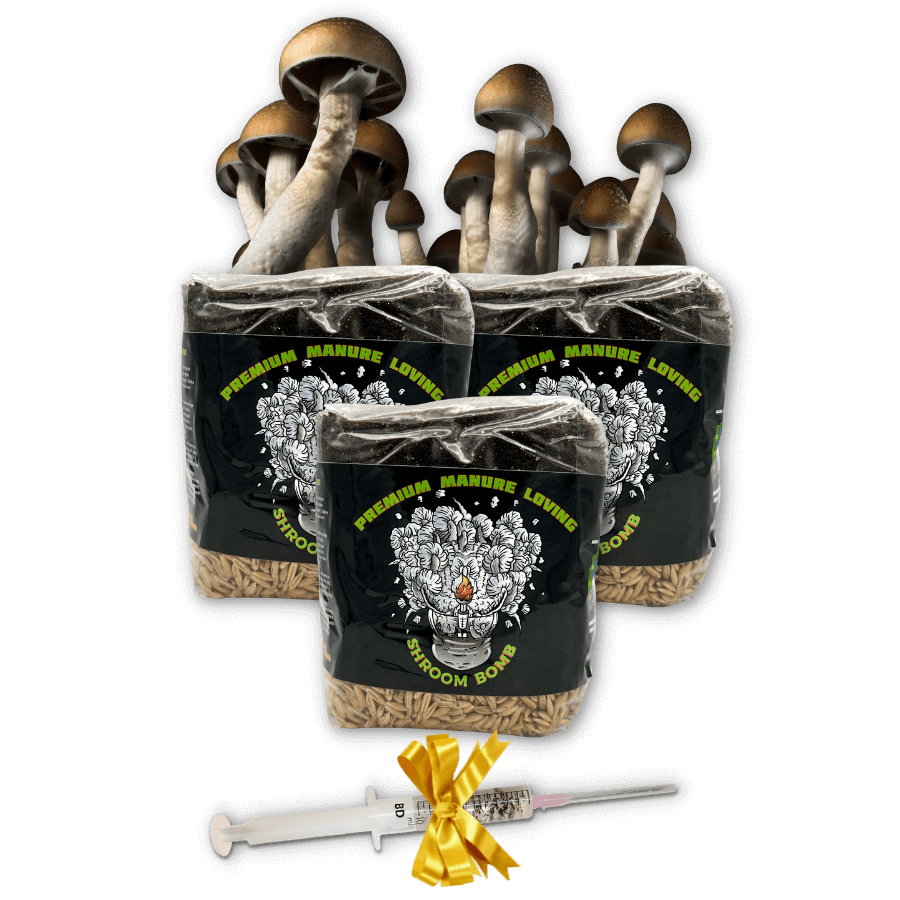

Comments (0)